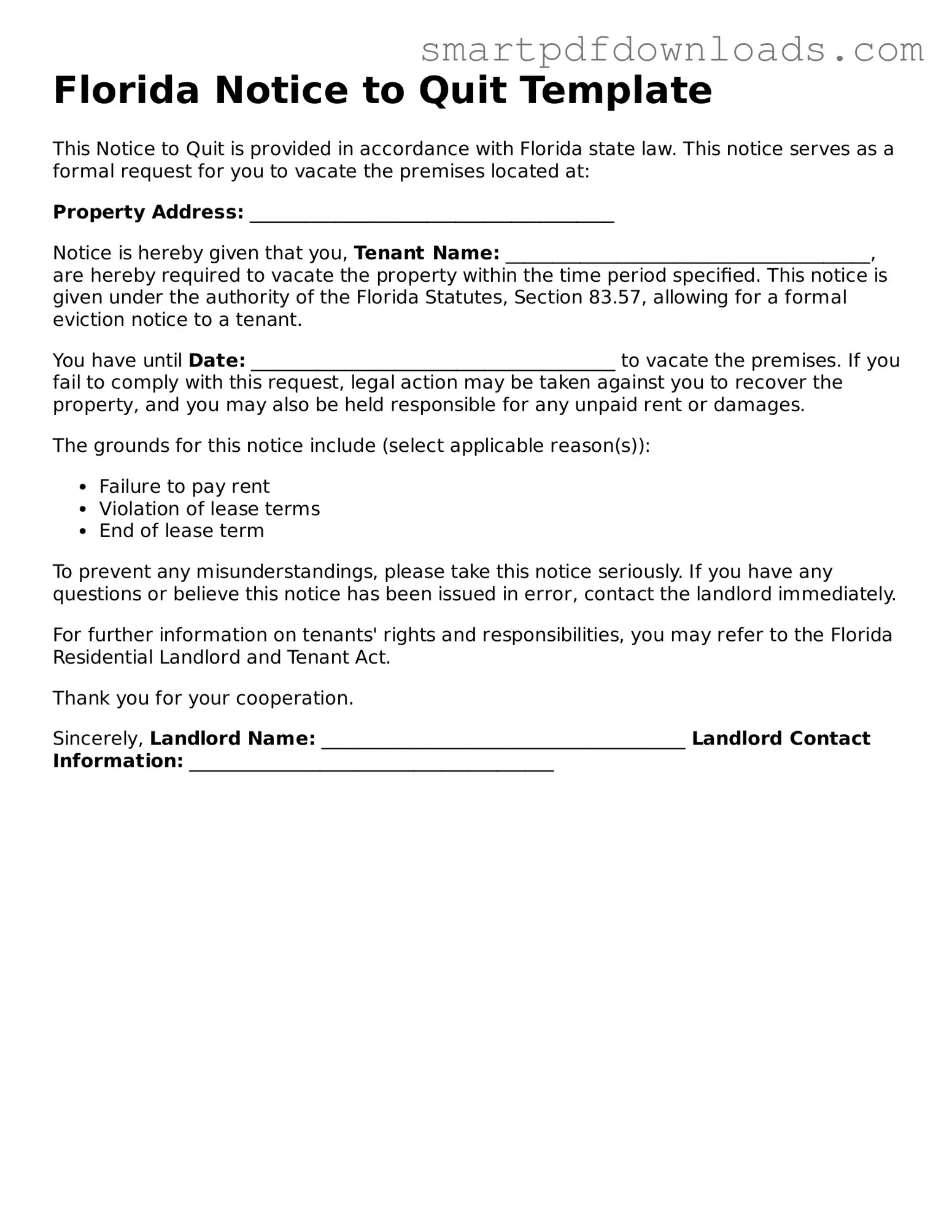Florida Notice to Quit Template
This Notice to Quit is provided in accordance with Florida state law. This notice serves as a formal request for you to vacate the premises located at:
Property Address: _______________________________________
Notice is hereby given that you, Tenant Name: _______________________________________, are hereby required to vacate the property within the time period specified. This notice is given under the authority of the Florida Statutes, Section 83.57, allowing for a formal eviction notice to a tenant.
You have until Date: _______________________________________ to vacate the premises. If you fail to comply with this request, legal action may be taken against you to recover the property, and you may also be held responsible for any unpaid rent or damages.
The grounds for this notice include (select applicable reason(s)):
- Failure to pay rent
- Violation of lease terms
- End of lease term
To prevent any misunderstandings, please take this notice seriously. If you have any questions or believe this notice has been issued in error, contact the landlord immediately.
For further information on tenants' rights and responsibilities, you may refer to the Florida Residential Landlord and Tenant Act.
Thank you for your cooperation.
Sincerely,
Landlord Name: _______________________________________
Landlord Contact Information: _______________________________________
